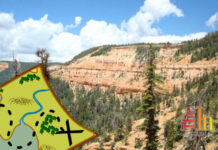
Are some sunscreens safer than others?
By Joe DiNardo
There are 16 sunscreen ingredients that are currently approved, mostly based on safety testing submitted that dates back to 1978 — 40 years ago — by the Food & Drug Administration.
Avobenzone, homosalate, octinoxate, octisalate, octocrylene, and oxybenzone are used the most frequently in products. These ingredients are often incorrectly identified as “chemical” sunscreens. But in the science world, they are called “organic,” not because they are grown organically but because they contain “carbon.” They are all synthetic chemicals.
Zinc oxide and titanium dioxide are two other sunscreens that are commonly used and are called “mineral” or “inorganic” sunscreens, meaning that they do not contain carbon. They are often incorrectly called “chemical free” sunscreens; however, that is a false statement since everything in the known universe — including us — is chemically based.
Since the FDA last approved these ingredients, there have been significant advances in science that have demonstrated that some of these chemicals may not be as safe as once thought.
Some of these concerns become more evident when one looks at the history of melanoma and use of sunscreens, which became popular in the 1970s.
For example: the American Cancer Society reports that the incidence of melanoma has increased from roughly 8 per 100,000 men in 1975 to 32 per 100,000 men in 2014 and from approximately 7 per 100,000 women in 1975 to 21 per 100,000 women in 2014.
Those are fourfold and threefold increases in rates of melanoma for men and women, respectively. For this reason alone, we should minimize our exposure to the sun whenever possible.
You might have recently heard that Hawaii banned sunscreen products containing octinoxate and oxybenzone because they are toxic to coral and threaten overall reef health by inducing coral bleaching, harming or killing coral larvae, causing DNA damage, and acting as endocrine disruptors.
What does that all mean?
Simply put, these chemicals are toxic to coral and several species that live on or around the reef, like algae, sea urchins, shrimp, crab, fish, aquatic mammals, etc. In fact, we can even see an impact in migratory birds that eat fish contaminated with these sunscreen ingredients, and the birds’ eggs are affected as well.
Many critics of the Hawaii ban have asked what the big deal about saving coral is. Aren’t people more important and shouldn’t we care more about skin cancer than coral reefs?
Other than coral reefs minimizing significant shoreline erosion, they also produce an estimated $350 billion in worldwide tourism, fishing, and food for humans.
The other point that needs to be discussed is that the organic sunscreens and “nanoparticle” sized inorganic sunscreens are considered endocrine-disrupting chemicals per “The Endocrine Disruption Exchange,” or TEDX for short.
Again, why be concerned if endocrine disruption causes toxicity in aquatic life?
It’s simple: According to the World Health Association, endocrine disruptors are not species specific. In other words, these chemicals can produce toxicity in any species that has an endocrine receptor — which includes humans.
If the above statement about endocrine disruptors were true, one would expect to see numerous studies in the peer-reviewed data showing various endocrine associated adverse reactions in many different species. And if one searches the literature, one would indeed find several hundred articles demonstrating just that, including reactions seen in human adults and children.
The reason why many of us worked together to help Hawaii ban octinoxate and oxybenzone is because both these chemicals each have over 100 scientific peer-reviewed articles published demonstrating some form of toxicity.
Of the remaining chemical sunscreens, octocrylene is also of concern, not just for its endocrine-disrupting potential but also for its ability to form a cancer-causing chemical in sunscreen products called benzophenone, which is listed on California Proposition 65 as a cancer-causing chemical based on studies conducted in the U.S. by the National Toxicology Program and by the International Agency for Research on Cancer.
Additionally, there is another concern about octocrylene, octinoxate (also called octylmethoxycinnamate), and oxybenzone (also called benzophenone-3, a derivative of the carcinogen benzophenone): After only one hour of sun exposure, free radicals form in the skin that produce enzymes that can lead to the development of melanoma.
With respect to avobenzone, homosalate, octisalate, nanoparticle (but not microparticle) zinc oxide and titanium dioxide, there are some scientific papers in the literature that have demonstrate some level toxicity. More research is likely to follow.
With that said, if you are interested we are currently asking the FDA to reopen their review of active ingredients in sunscreens that are approved for human use via a citizen’s petition. Please review the petition and sign it if you believe this is a good idea.
In the meantime to avoid developing skin cancer, practice sun avoidance when possible; wear protective clothing, sunglasses, and hats; use a beach umbrella or a cabana when on the beach; and use a sunscreen that is safer for reefs and humans, like zinc oxide or titanium dioxide.
Joe DiNardo is a research scientist with 42 years experience in toxicology, product formulation, and regulatory affairs in the personal care industry.



